Doctor Adam Frew
Candidature
 Graduated PhD 2017
Graduated PhD 2017
Thesis title
How the soil environment affects root feeding scarabs with particular emphasis on the canegrub
Research Project
A large number of scarab beetles (Coleoptera: Scarabaeidae) feed on grasses as root-feeding larvae. These may be endemic species to particular countries (e.g. Christmas beetles, Anoplognathus spp. in Australia) where they have co-evolved with these hosts or may be invasive (e.g. African black beetle, Heteronychus arator) and switched from their indigenous host plants to Australian native plants after introduction. In some cases the introduction of foreign plant species such as sugarcane (Saccharum ssp.) has provided native Australian chafers (e.g. Canegrub, Dermolepida albohirtum) with new suitable hosts. In both these situations, chafers can become destructive pests of agroecosystems, including grassland pastures and sugarcane fields.
The biotic and abiotic soil environment (rhizosphere) in which the chafer larvae grow, develop and feed is highly influential in shaping the relationship between the chafer and host plant. Biotic influences include arbuscular mycorrhizal fungi (AMF), which associate with a vast range of plant partners and have been seen to modify resistance to insects by altering chemical and/or physical properties of the host plant. Abiotic drivers include water and nutrient availability. Grasses can be hyper accumulators of silicon (Si), which is the second most abundant element in soil. Si plays an important role in promoting growth, yield as well as Si defences against herbivory. With the impacts of elevated atmospheric CO2 shown to increase photosynthesis of many crops, such as sugarcane, it is unknown how Si defences will perform under these conditions. The impacts of Si and AMF in the soil on sugarcane defences and tolerance to belowground herbivory are yet to be investigated.
My research aims to better understand the biology of Australian chafers, specifically looking into how abiotic conditions (irrigation, fertilisation with NPK and Si) and biotic factors (AMF) impact on their performance on their host plant (sugarcane).
Research Images
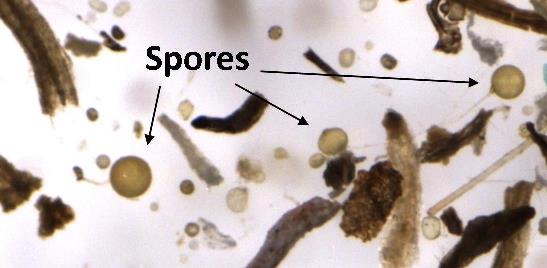
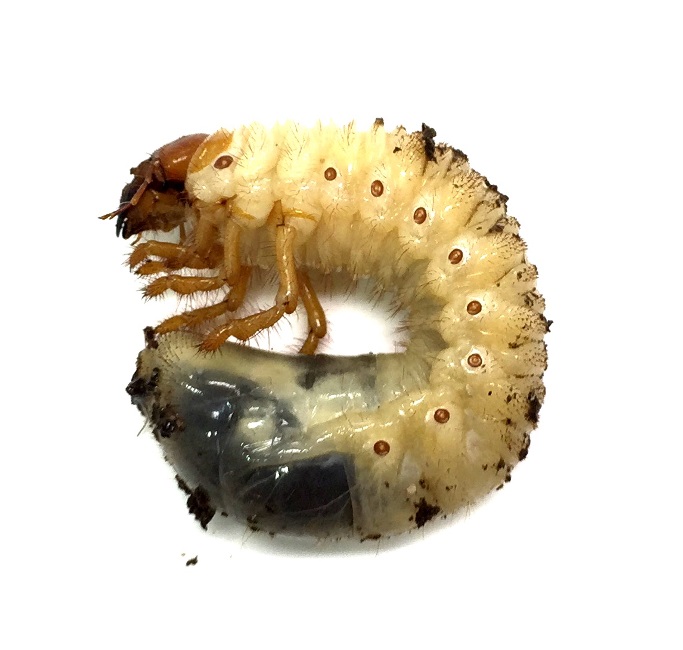
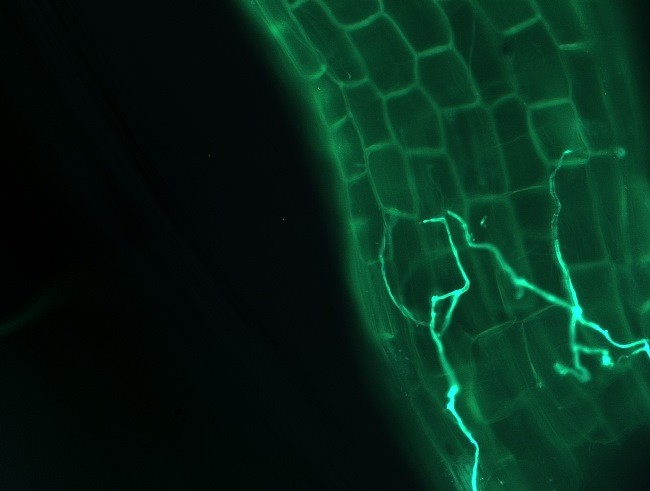
AMF hyphae inside a sugarcane root
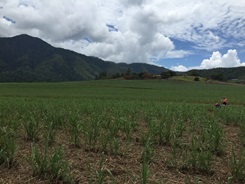
Canefield, near Cairns
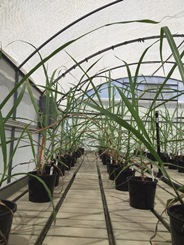
HIE Sugarcane Plot experiment
Publications
Frew A, Powell JR, Johnson SN, (2020) 'Aboveground resource allocation in response to root herbivory as affected by the arbuscular mycorrhizal symbiosis', Plant and Soil, vol.447, no.s 1-2, pp 463-473
Frew A, Powell JR, Glauser G, Bennett AE, Johnson SN, (2018) 'Mycorrhizal fungi enhance nutrient uptake but disarm defences in plant roots, promoting plant-parasitic nematode populations', Soil Biology and Biochemistry, vol.126, pp 123-132
Johnson SN, Lopaticki G, Aslam TJ, Barnett K, Frew A, Hartley SE, Hiltpold I, Nielsen UN, Ryalls JMW, (2018) 'Dryland management regimes alter forest habitats and understory arthropod communities', Annals of Applied Biology, vol.172, no.3, pp 282-294
Johnson SN, Ryalls JMW, Gherlenda AN, Frew A, Hartley SE, (2018) 'Benefits from Below: Silicon Supplementation Maintains Legume Productivity under Predicted Climate Change Scenarios', Frontiers in Plant Science, vol.9, Article no.202
Frew A, Allsopp PG, Gherlenda AN, Johnson SN, (2017) 'Increased root herbivory under elevated atmospheric carbon dioxide concentrations is reversed by silicon-based plant defences', Journal of Applied Ecology, vol.54, no.5, pp 1310-1319
Frew A, Powell JR, Allsopp PG, Sallam N, Johnson SN, (2017) 'Arbuscular mycorrhizal fungi promote silicon accumulation in plant roots, reducing the impacts of root herbivory', Plant and Soil, vol.419, no.s 1-2, pp 423-433
Frew A, Powell JR, Hiltpold I, Allsopp PG, Sallam N, Johnson SN, (2017) 'Host plant colonisation by arbuscular mycorrhizal fungi stimulates immune function whereas high root silicon concentrations diminish growth in a soil-dwelling herbivore', Soil Biology and Biochemistry, vol.112, pp 117-126
Johnson SN, Hartley SE, Ryalls JMW, Frew A, DeGabriel JL, Duncan M, Gherlenda AN, (2017) 'Silicon-induced root nodulation and synthesis of essential amino acids in a legume is associated with higher herbivore abundance', Functional Ecology, vol.31, no.10, pp 1903-1909
Frew A, Barnett K, Riegler M, Nielsen UN, Johnson SN, (2016) 'Belowground ecology of scarabs feeding on grass roots: current knowledge and future directions for management in Australasia', Frontiers in Plant Science, vol.7, p 321
Frew A, Powell JR, Sallam N, Allsopp PG, Johnson SN, (2016) 'Trade-Offs between Silicon and Phenolic Defenses may Explain Enhanced Performance of Root Herbivores on Phenolic-Rich Plants', Journal of Chemical Ecology, vol.42, no.8, pp 768-771
Johnson SN, Benefer CM, Frew A, Griffiths BS, Hartley SE, Karley AJ, Rasmann S, Schumann M, Sonnemann I, Robert CAM, (2016) 'New frontiers in belowground ecology for plant protection from root-feeding insects', Applied Soil Ecology, vol.108, pp 96-107
Johnson SN, Gherlenda AN, Frew A, Ryalls JMW, (2016) 'The importance of testing multiple environmental factors in legume–insect research: Replication, reviewers, and rebuttal', Frontiers in Plant Science, vol.7, Article no.489
Frew A, Nielsen UN, Riegler M, Johnson SN, (2013) 'Do eucalypt plantation management practices create understory reservoirs of scarab beetle pests in the soil?', Forest Ecology and Management, vol.306, pp 275-280
Supervisors
Dr Scott Johnson and A/Professor Jeff Powell